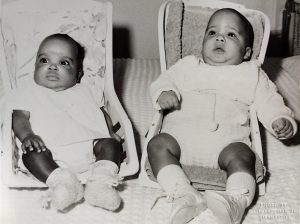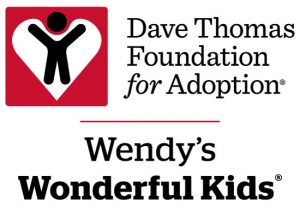This month marks our 124th anniversary! Since 1900, we have been helping Virginia foster care youth and have served over 17,000 children, youth, and families.
We believe every child deserves a loving home. Through our four main programs, we strive to find permanent adoptive homes for children of all ages throughout Virginia and provide critical support services to adoptive families, youth who have aged out of the foster care system, and past and present adoptees.
Our organization has continued to thrive decade after decade because we always put the children’s needs first. Our systems and processes have changed over the years to reflect what the children and youth need most.
Keep reading to learn more about our history, important organization milestones, monumental people, and what’s planned for our future.
Helping Virginia Foster Care Youth Through the Years
The Children’s Home Society of Virginia’s History
The 1900s
Founded in the early 1900s, we have a rich history of addressing the needs of neglected and abused children, with Reverend Maybee playing a crucial role in our early success. The organization’s commitment to innovative solutions was influenced by national initiatives like the 1909 White House Conference on the Care of Dependent Children.
The 1910s
As the number of children in need increased during the 1910s, the organization faced financial challenges, leading to an extensive campaign to garner support. Local advisory boards, designed to address unique local needs, played a key role in soliciting financial contributions. Reverend Maybee, the founding secretary pro-tem, actively participated in the financial campaign by delivering sermons to secure funds.
During the 1910s, the society’s policies primarily focused on finding homes for neglected and abused children. Society members engaged in frequent, friendly visits to families during placements, offering advice and suggestions. Letters from adopted children demonstrated gratitude for the society’s assistance, showcasing positive outcomes.
Notably, in 1907, the society recorded the first instances of children being returned to their biological families, a trend that continued to grow over the years.
The 1920s

In 1919, the Board of Directors appointed a committee in Roanoke to secure a property for a receiving home, which was purchased in 1920 and served the Children’s Home Society in the western part of the state.
By 1925, the Roanoke branch had expanded rapidly, housing about thirty children. Dr. C.C. Carstens investigated the entire Children’s Home Society, including both the Richmond and Roanoke receiving homes. His findings emphasized the need for improved medical assessments and care, leading to a mandate to hire trained social workers.
Reverend Maybee, the State Superintendent since the society’s founding in 1900, initiated innovations in policies and the physical setup of the agency in response to Dr. Carstens’ recommendations. The Board of Directors raised the staff’s standards, built a hospital room in the receiving home, and conducted minor operations.
In 1929, the Richmond Junior League took over the management of the receiving home, a significant progressive step. Reverend Maybee suggested broadening the program to serve various children beyond those intended for adoption or placement, aligning with recommendations from The Child Welfare League.
On September 25, 1929, after 30 years of service, Reverend Maybee resigned as State Superintendent, and Frank Davis Preston assumed the role, bringing rich experience in social work and law to the position. The transition marked a significant point in the society’s history.
The 1930s
After Mr. Preston took over as the superintendent of The Children’s Home Society following Reverend Maybee’s resignation, he also assumed the head of the financial department. The agency faced financial challenges due to the rapid growth of wards. The economic conditions of the 1930s further exacerbated the debt, with creditors threatening to close the society, owing $50,000.
Despite these obstacles, the dedicated staff exhibited loyalty and steadfastness, continuing their work even when offered alternative jobs. In May 1931, a statewide effort was led by Governor John Garland Pollard, CHSVA founding director Alexander Weddell, and E. Lee Trinkle to raise the outstanding $50,000, securing the society’s financial stability. This marked a monumental moment for the society, as it was entirely debt-free for the first time in years, providing a firm financial foundation.
In 1931, other changes in the financial department further solidified efforts. Planned campaigns were held annually from 1931 onward, and the society became a member of the Richmond Community Fund, contributing to coordinated fundraising and fund distribution among member organizations.
Mr. Preston arranged three fellowships for graduate students at the School of Social Work at the College of William and Mary, a pioneering move that demonstrated the society’s trailblazing approach. This initiative marked the Children’s Home Society of Virginia as one of the first to implement such a plan, showcasing its innovative spirit.
The 1940s and 1950s
 During the 1940s and 1950s, The Children’s Home Society of Virginia witnessed a surge in adoptions driven by WWII, European refugees, and the Baby Boom. WWII saw a significant number of adoptions as American soldiers’ wives, unable to provide for their children after their husbands died in the war, had to put their children up for adoption. Simultaneously, European refugees, primarily Jewish and from central and western Europe, immigrated to the United States, leading to an increased number of older children in the adoption system.
During the 1940s and 1950s, The Children’s Home Society of Virginia witnessed a surge in adoptions driven by WWII, European refugees, and the Baby Boom. WWII saw a significant number of adoptions as American soldiers’ wives, unable to provide for their children after their husbands died in the war, had to put their children up for adoption. Simultaneously, European refugees, primarily Jewish and from central and western Europe, immigrated to the United States, leading to an increased number of older children in the adoption system.
Between 1933 and 1945, 180,000 to 220,000 European refugees arrived in the U.S., and over 8,000 unaccompanied European children came during the war. To adapt to the growing number of older children, the society developed a private Foster Care Program, offering temporary placement with families until adoptive families were found. Counseling services and home studies were introduced to address the behavioral issues resulting from trauma, neglect, and lack of family support.
After WWII, the United States experienced the Baby Boom, with an average of 4.24 million new babies annually between 1946 and 1964. The society, recognizing the effects of trauma on babies separated from their birth mothers, streamlined its services to place babies into homes more quickly.
In the 1950s, comprehensive studies highlighted the mental and behavioral effects of trauma, separation, and abandonment on babies. Responding to this understanding, the society became more efficient in its operations, experiencing significant growth and success during this period.
The 1960s and 1970s
 During the 1960s, the Children’s Home Society of Virginia embraced social change and became one of the first statewide agencies to encourage the placement of children of minority and mixed-race backgrounds. Federal law now prohibits the delay or denial of adoptive placement based on the race or ethnicity of a child in the US foster care system.
During the 1960s, the Children’s Home Society of Virginia embraced social change and became one of the first statewide agencies to encourage the placement of children of minority and mixed-race backgrounds. Federal law now prohibits the delay or denial of adoptive placement based on the race or ethnicity of a child in the US foster care system.
Adapting to these changes, the organization rewrote its adoption guidelines, prioritizing the assessment of prospective families for the best match for each child. The revised guidelines included financial considerations, individualized adoption criteria, and mandatory interviews for prospective adoptive parents.
In the 1960s, the organization also began accepting unmarried and single adoptive parents, challenging the myth that marriage is a requirement for adoption. Adoption reform continued into the 1970s, with the Children’s Home Society of Virginia breaking social barriers and championing the placement of “difficult to place” children, including those with disabilities, special needs, older children, or in sibling groups.
In 1971, the society launched the “Black Homes for Black Children” campaign, raising awareness of the need for more African American adoptive parents to address the plight of African American children in foster care. The organization remains dedicated to finding the right family for every child, championing inclusivity and diversity.
The 1980s
During the 1980s, the Children’s Home Society of Virginia collaborated with the Virginia Department of Social Services to enhance community service. Together, they launched the “Partnership for Adoption” program, focusing on finding permanent homes for older youth, disabled youth, and sibling groups. This marked a shift from the organization’s previous emphasis on infant adoption, driven by societal changes and the influx of youth entering the foster care system after the 1950s.
Building on the initiative launched in 1971 to recruit black adoptive families, the 1980s saw a continued emphasis on this recruitment. The “Black Homes for Black Children” campaign evolved into a state-wide print campaign during the 1980s. This was in response to the prevalent need for adoptive black families, as a significant portion of youth in the foster care system were black.
The organization prioritized meeting the individual needs and desires of waiting children and adoptive families, aiming to make the best choices. They were pioneers in offering free pregnancy counseling in the 1980s, addressing the high number of unwanted pregnancies during that time.
In 1985, 10 new outreach offices, including ones in Chesterfield and Roanoke, were opened to make the organization more accessible to expectant mothers, reducing travel time and expenses and providing help and support where needed. The focus remained on understanding and meeting the unique needs of each child and family.
The 1990s
During the 1990s, we pivoted again and began open adoptions. Open adoption is when biological parents have a relationship with their biological child.
Research shows that children do better in open adoptions because it gives the child a chance to learn how they came to be adopted. Open adoptions also allow children to ask questions about their family background. It is healthy for children to continue to have a relationship with their biological parents for identity purposes, security, connection, and completeness. Open adoptions allow the adopted child to have a wider circle of family and support. Attachment is very crucial for an adopted child.
Besides starting open adoption in the 90s, we elected our first female board president, Cheryl Jarvis, in 1993.
The 2000s
 During the 2000s, the Children’s Home Society became one of the first sites for the Wendy’s Wonderful Kids (WWK) program, a signature initiative of the Dave Thomas Foundation for Adoption. This program employs adoption professionals known as recruiters who utilize a child-focused model to find permanent homes for children in foster care.
During the 2000s, the Children’s Home Society became one of the first sites for the Wendy’s Wonderful Kids (WWK) program, a signature initiative of the Dave Thomas Foundation for Adoption. This program employs adoption professionals known as recruiters who utilize a child-focused model to find permanent homes for children in foster care.
CHSVA, with its longstanding commitment to finding the best fit for every adoptive child, embraced the child-focused recruitment model. This approach has proven to be three times more effective in serving children who have been in foster care the longest, including teenagers, children with special needs, and siblings. CHSVA is one of three WWK program sites in Virginia and has received national recognition for facilitating a significant number of foster care adoption matches.
The 2010s
The 2010s were some of the Children’s Home Society of Virginia’s most innovative, as we successfully implemented two new programs:
- The Post Adoption Program
- The Possibilities Project now called My Path Forward
We were one of the first adoption agencies to pioneer post adoption services. In partnership with the Virginia Department of Social Services and with tremendous support from community and corporate donors, our Post Adoption Program has grown quickly and has proven to be one of our most successful innovations ever.
Founded in 2015, My Path Forward provides housing and wrap-around services for aged-out foster youth in Virginia to change the trajectory of these children’s lives and to break the cycle of poverty for the long term. Our experienced staff tailors plans for each youth to meet their unique needs—and to develop their individual talents—to ensure they are getting ahead in life and achieving the independence they seek.
The 2020s
In the 2020s, the Children’s Home Society of Virginia continues to innovate through the expansion of our My Path Forward program and through advocating for changes within the foster care system. This advocacy has resulted in better pay for Local DSS social workers, upgrades to state technology, increased support for aged-out youth, and increased support for kinship adoption. All of these innovations will lead to better results for Virginia’s at-risk children for years to come.
Children’s Home Society of Virginia | Support Virginia Foster Care Youth
We are proud of how far we have come in the last 124 years, but we look forward to our future and helping 17,000 more children, families, and Virginia foster care youth.
Currently, there are nearly 5,400 children in Virginia’s Foster Care System. If you want to give a child in need a forever home, get in touch with us today: 804-353-0191.
If you want to give financially to our cause, every dollar makes a difference in the life of a child, and no amount is too small.
